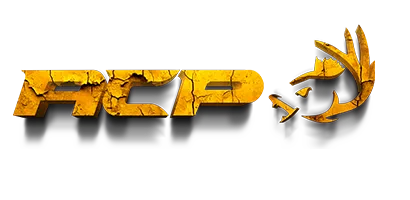Reviews
User Score
Rate This
Descriptions:
Wapiti male long-distance shot from 996 meters
Wapiti male long-distance shot from 996 meters. Bob and Chris Beck head to their annual elk hunting spot at the famous Bair Ranch outside Glenwood Springs, Colorado. This week, Chris shows Bob who’s boss by exceeding his longest shot on the ranch by 21 meters and shooting a big buck at 996 meters.sourceArticles
Using binoculars with glasses Long-distance shooting
By Jon AllenUsing binoculars with glasses can be fun and easy with the right technique. Glasses can be a necessary evil. They are used either to correct a problem, such as reduced vision (prescription), or to prevent a problem (safety, sun), such as glare or dust entering the eye. Although they are extremely efficient In most cases, glasses can also be frustrating when trying to integrate them with binoculars. optics is extremely common, as hunters, competitive shooters, birdwatchers, travelers, sports enthusiasts and countless others use them together. These tips can help you improve your overall experience.
Glasses : To wear or not to wear?
Most people who wear glasses don’t realize that if they are nearsighted or farsighted, they don’t need to wear glasses to use binoculars. People with astigmatism, on the other hand, are not necessarily so lucky. Basic myopia and hyperopia can be resolved by turning a few knobs, allowing the user to temporarily dispense with glasses. The central focusing ring is designed to help you focus on objects both near and far. The user must look through the binoculars and adjust the dial to add clarity.the center focus ring will move the inner lenses closer or further from your eyes to achieve an effect similar to that of eyeglasses. Although your setting won’t be the same as someone with 20/20 vision, images should be clear.
When is it necessary to wear glasses?
People with astigmatism generally won’t see a clear image when looking through binoculars without their glasses. This is due to an imperfection in the curvature of the cornea or crystalline lens of the eye – a problem that will not be corrected by simple focus adjustment and must be corrected by glasses or contact lenses.Early morning and late afternoon can also present situations where the port glasses are required. But instead of corrective glasses, low-light angles may require the use of sunglasses during viewing sessions. The bright lights of sporting events can also force viewers to supplement their vision with anti-glare glasses to optimize their viewing experience. Whatever the application, wearing glasses with binoculars is sometimes unavoidable.Adjust the eye relief to the binoculars’ ocular lensesThe eye relief is the distance between your eye and the binoculars’ ocular lenses. If the lenses are too close to your eye, the visual image may appear blurred, with a black cloud around the edges. What’s more, the glass can brush against your eyelashes and get in the way. When the lenses are too far from the eye, the image forms a tunnel of vision that does not use the entire field of view.
Using binoculars with glasses
Quality binoculars, like TORIC, feature special eyecups with a multi-stop function that holds the position of the eyecup in place and doesn’t move until you’re ready to reposition it.adjustable eyecups eliminate this problem. In fact, the eyelets give the user constant eye relief. Non-glasses wearers should fully extend the eyelets. This ensures a certain distance between the eyeball and the binocular lens. And allows the user to press the eyelets around his or her orbit. Conversely, spectacle wearers need to fully retract the eyecups, as glasses naturally add distance between the eyeball and the binocular lens. Think about eye protection when using binoculars with glassesPeople who use binoculars while wearing glasses are not able to completely seal the eyecups around their eye sockets. Instead, the eyelets rest on the lenses of their glasses. Although focusing problems can be solved by adjusting eye relief and using the central focusing wheel, the open space between the glasses and the eyeball can allow light to enter the view and create glare.
Using binoculars with glasses
Eyepiece shields for binoculars can be purchased separately and fit almost all binocular eyepieces.Eyepiece shields are not suitable for everyone, as their shape and texture may not fit all types of eyewear. When properly fitted, they can help to dramatically improve the visual experience by blocking out side light, making the field of vision brighter. Eye protectors will also reduce watering due to wind and precipitation blowing over the sides of the eye.Adjust diopterAlthough we don’t realize it, many of us have eyes with different prescriptions. While the central focus ring adjusts the focus of both lenses, the diopter ring allows fine adjustments between the two lenses. This can be particularly useful for people who wear bifocals, and helps refine the overall field of vision.First look through the binoculars with both eyes open. Use the central focusing wheel to focus on the view. Then close the right eye to check the focus on the left eye. Once you’ve focused on the left eye using the central focusing wheel, close the left eye. Now use the diopter ring to focus on the right eye. With the right equipment and techniques, using glasses with binoculars need not be frustrating. All it takes is a little practice to make it an enjoyable experience.











